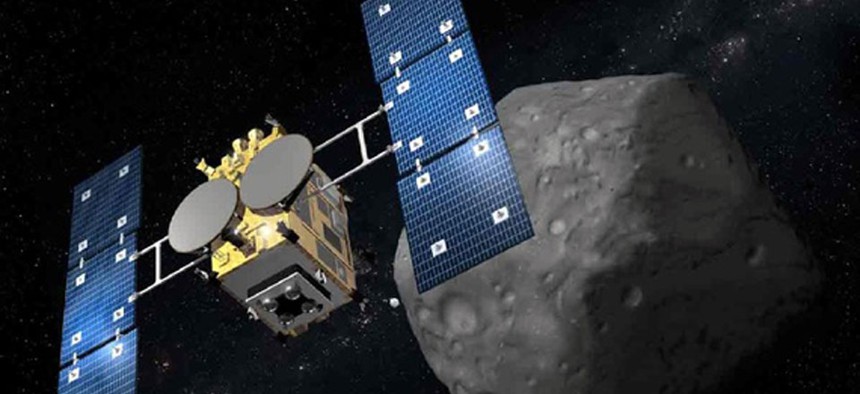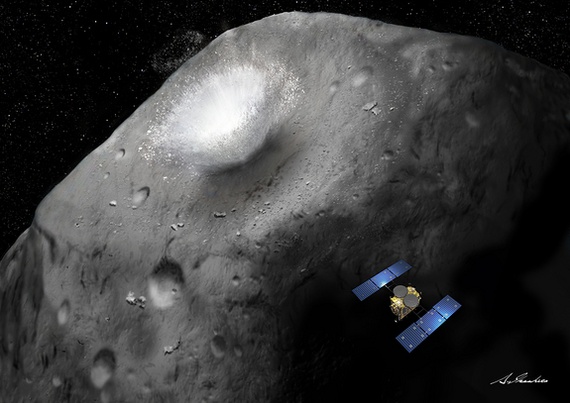Japanese Space Explorer Goes Hunting Asteroids

Japan Aerospace Exploration Agency
The space explorer Hayabusa2 began its mission Wednesday to shoot an explosive bullet at a space rock and return home with its cosmic guts by 2020.
Armed with a high-speed explosive bullet and powered by an ion engine, a Japanese space explorer blasted off Wednesday on a six-year hunt for an asteroid.
Launched by the Japanese Aerospace Exploration Agency (JAXA), Hayabusa2 detached from its space rocket at 1:09 a.m. EST Wednesday morning and will rendezvous with its target, asteroid 1999 JU3, in 2018. After excavating the space rock’s surface for 18 months, the predator probe will return with its expected bounty—organic materials believed to be the building blocks of the solar system–in 2020, according to the AP .
The spacecraft is a beefed-up version of its predecessor, Hayabusa, which returned the first-ever pristine samples of an asteroid in 2010. Hayabusa was intended to bring back large chunks of asteroid 25143 Itokawa, according to Vox , but due to mechanical failures and the asteroid's terrain, it only managed to grab a few microscopic dust particles.
With Hayabusa2, JAXA decided to up its chances for a successful haul by sending the probe to an asteroid suspected of holding water and organic material. JAXA also fitted the craft with new weaponry: a bullet capable of creating an impact crater. Hayabusa2 will then deploy three rovers and a German and French-made lander called MASCOT into the blast zone, according to Al Jazeera .

“It's going to produce a puff of material, ejecting material out into space, which is going to be collected by this instrument, and part of that cloud is going to be brought back,” said Francisco Diego, from University College London, to Al Jazeera .
But before blasting its way into the asteroid, Hayabusa2 first has to travel 5 billion kilometers to the landing zone. To accomplish this, the craft will orbit close to Earth and then use the planet’s gravitational pull to slingshot into space in 2015.
Its ion engines, which cost $260 million , will propel Hayabusa2 at a speed of 25 miles per second by using electricity to accelerate gas particles. The craft will use those same engines to return pristine asteroid chunks to Earth in 2020.

“Knowledge of those materials help us not only learn about the solar system in terms of its early stages of formation, but it also helps us [discover] how life on Earth may have evolved and where the oceans of Earth may have formed,” planetary scientist Paul Abell, with NASA’s Johnson Space Center in Houston, said to Discovery News .
The endeavor is reminiscent of the European Space Agency's Rosetta mission which excited millions by landing a space probe on a comet last month. As such, when 2018 comes, prepare for another astronomical adrenaline rush.





